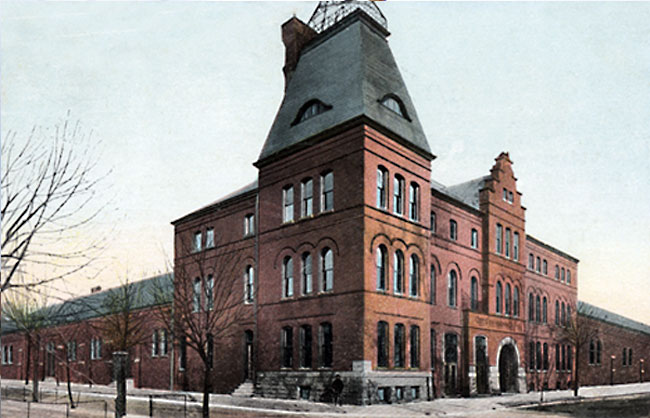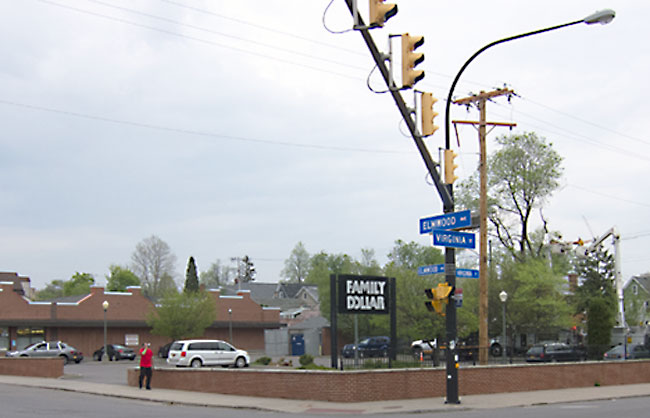Before Kleinhans and Memorial Auditorium:
The Elmwood Convention/Music Hall
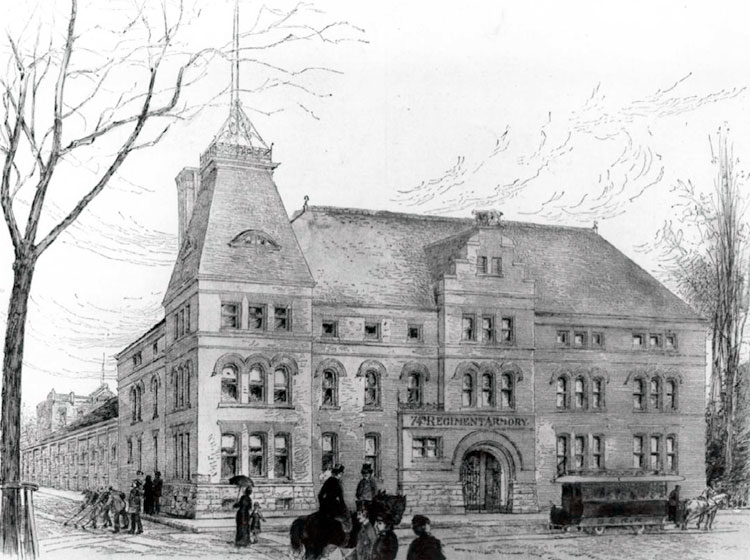
Bethune-designed 74th Armory as it appeared when new, c. 1886-1888. Image source: TBHM
The northeast corner of Virginia Street and Elmwood Avenue was occupied by a military facility for 31 years, beginning in 1868 when Elmwood was called Fremont Street. In 1882, Buffalo architect Milton E. Beebe designed a new armory for the 74th New York National Guard Regiment. In the drawing above, the Beebe structure is visible at left rear, rising above the drill shed of the armory. In front of the armory was the parade ground, open land on which locals enjoyed Sunday promenades.
That changed in 1885 when the state decided to construct a larger armory administration building on the parade ground, directly fronting Virginia Street. Louise Bethune designed it. When a fire destroyed the old armory and drill shed in early 1886, she also designed a new drill shed. Although postcards show the armory complex in red, the brick was actually yellow. The administration building, 65' x 120', was used for offices, classrooms, dining, and the headquarters of the GAR. The drill shed was 120' x 285'. By the time it was finshed in 1886, the cost was around $54,000.
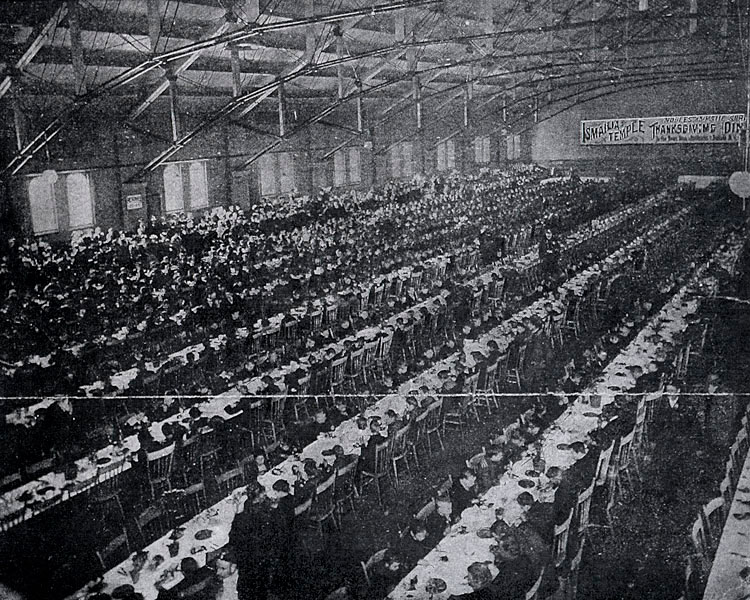
Buffalo Newsboys Thanksgiving dinner, 1898. Image source: BECPL
The armory's drill shed, seen above in an 1898 newspaper photo, was particularly welcome for non-military uses. Buffalo had no convention hall in the late 19th century, something that was becoming necessary for any city that wished to be known as progressive and engaged.
And then New York began to build grand armories; it was an era of monumental armory construction across the country. That and the increase in the 74th's roster made the Elmwood Armory suddenly too small. By 1899, the unit had moved into the commodious Connecticut Street Armory and left the 13 year-old Bethune design vacant.
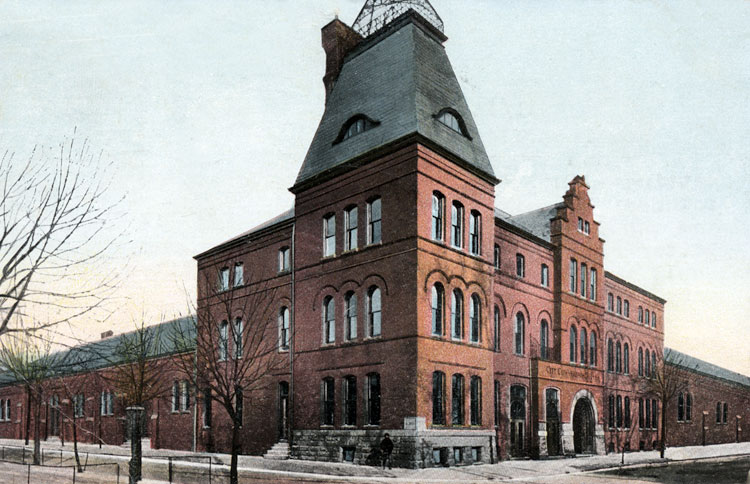
Sign over the entrance has been changed to "City Convention Hall". Image source: private collection
Immediately, Buffalonians clamored to take possession of the Elmwood Armory for use as a city convention hall. Successful negotiations with the state resulted in the city receiving ownership in January 1900. The drill shed needed some improvements that included lighting, emergency exits, painting, seats, a stage. Finding the $8,000 for that proved contentious but eventually successful. With folding chairs, referred to as tricky "jacknife" chairs liable to fold up in use, the floor could seat around 2,700 facing the stage; the balcony held another 350.
With a splash, the new City Convention Hall opened December 3, 1900 with a G.A.R. fair. Closely following were Maria Love's Charity Balls and a German charity ball. Central High School held its graduations there.

Stage and lighting installed in the Elmwood Hall. Image source: Courier
And then the Hall was needed for an additional use: musical performances. Buffalo's Music Hall on Main Street, having fallen into financial difficulty, was sold in 1900 to Jacob Schoellkopf for use as a commercial theater. Buffalo's music impresarios, Louis W. Gay, Mai Davis Smith, Marion DeForest, and Zorah B. Berry, needed a location for their classical and pop performances. The Convention Center suited this purpose very well. Although not aesthetically attractive, with its exposed trusses, not well heated or furnished with comfortable chairs, its acoustics were the delight of visiting soloists whose voices carried perfectly without effort. Even the screeching of trolley cars around the curve at Elmwood and Virginia did not prevent concert-goers from enjoying the Pittsburgh Orchestra with Nellie Melba, the New York Philharmonic with Gustave Mahler conducting, the Philadelphia Symphony with Leopold Stakowski, the Boston Symphony, and the Cincinnati Symphony.
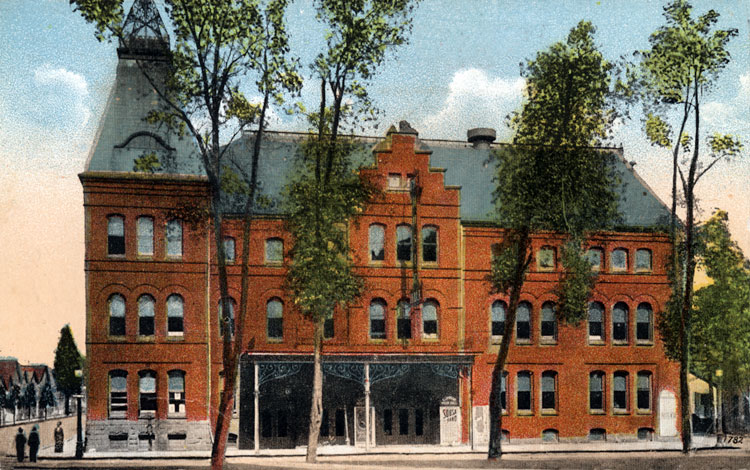
Elmwood Music Hall with covered entrance installed. Posters advertise Sousa's Band, c 1900. Image source: private collection
Fortunately, relief from a crowded schedule at the Convention Hall was soon to appear in the form of the Broadway Armory. The 65th New York National Guard moved into its new armory on Masten Avenue in 1907, leaving its old facility to the city and in need of much repair work. This was done and the armory began to be referred to as the "new Convention Hall," which prompted the Common Council to rename the Elmwood facility, the "Elmwood Music Hall" to avoid confusion.
The Music Hall still featured sporting events, particularly boxing, track meets, card parties, political conventions and rallies, etc. but it became the place to go to see Pablo Casals play the cello, Sergey Prokofiev on the piano, Victor Herbert conducting summer concerts in 1904, Camille Saint-Saens in 1905. The biggest audience in the early days came to hear Enrico Caruso sing on May 8, 1908. Chairs filled the drill shed, commonly called the "barn" and extra seats were placed on the stage.
In addition, the excellent organ that played in the Temple of Music at the Pan-American Exposition and was donated to the city by J.N. Adam provided Buffalonians with free concerts on alternate Sundays. Well-known visiting organists enjoyed playing on it, entertaining thousands over the years. (The end of the great organ is detailed here.)
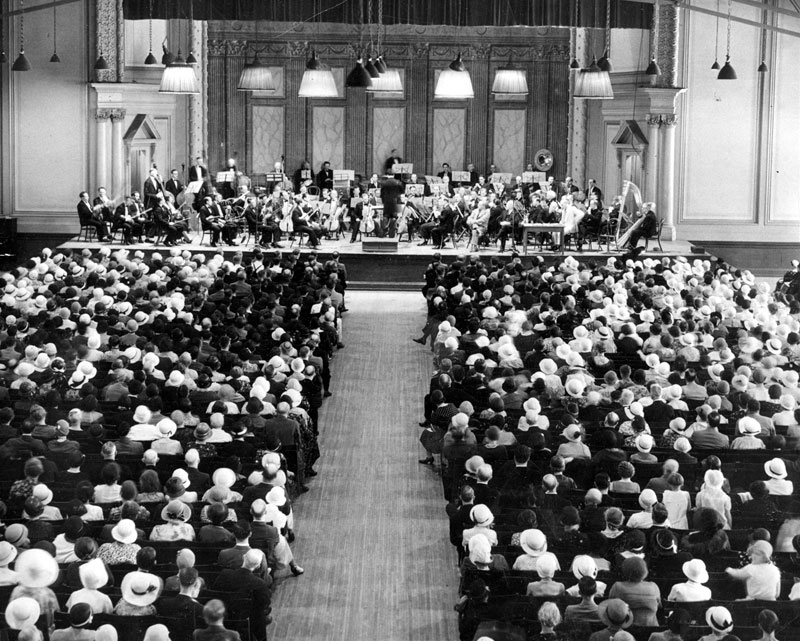
Orchestra performance, 1932. Image source: TBHM
Local singers entertained, including Nina Morgana (who also performed at the Pan-American), Rose Bampton, and Helen Oelheim. Pop concerts copied Boston's, with red-checked tablecloths, sandwiches, and beer. Lily Pons, Percy Grainger, John McCormack, Harry Lauder, Yehudi Menuhin (who demanded the screeching trolleys be stopped but played anyway when they weren't) all stood on the stage at the Elmwood Music Hall. And when the Buffalo Philharmonic Orchestra was founded in 1935, it also performed in the "old barn."

Elmwood Music Hall in 1938. Image source: Buffalo Times
The end came suddenly. Nelson Eddy was the last performer at the Elmwood Music Hall, on February 25, 1938. Some joked that his soaring voice loosened the trusses, but the barn had been deteriorating for years. Immediately after that concert, city inspectors determined that the roof was in imminent danger of collapse and closed the hall permanently, forcing cancellations of dozens of events. Repair costs would be prohibitive and would not result in a modern concert hall in any case. Many in Buffalo mourned its passing for the extraordinary memories it held.
The Masonic Consistory at 1180 Delaware Avenue (now Canisius High School) had a large auditorium and concerts were scheduled there for the next two years, while the city worked out where to place a new concert hall whose funding had largely been provided by Edward and Mary Seaton Kleinhans. Kleinhans Music Hall opened on October, 1940. Some had argued that it should built on the land made vacant by the old Elmwood Music Hall, but that was eventually rejected in favor of the the present location at Richmond and North Streets.
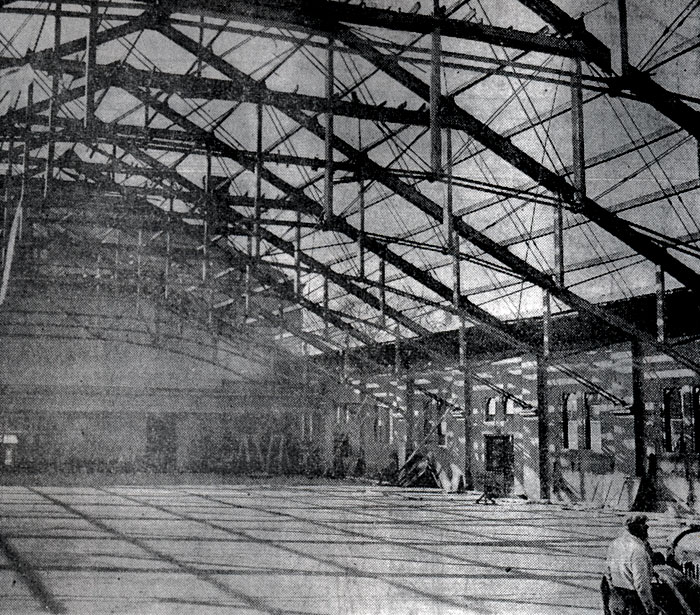
Demolition of the hall, October 1938. Image source: Buffalo News
The Depression assisted Buffalo's music community in several ways. The WPA paid Philharmonic musicians from 1936 - 1938. The federal program also paid for the demolition of the old Elmwood Music Hall, estimated at $50,000. And WPA funds supplemented the Kleinhans' money in the construction of the new Kleinhans Music Hall.
And what of the vacant lot at the northeast corner of Elmwood and Virignia? It was sold to a company in 1942 that constructed a gas station. In 2015, part of the lot (where the old 1882 armory was) is occupied by a Dollar General discount store. The old parade ground is a parking lot.
